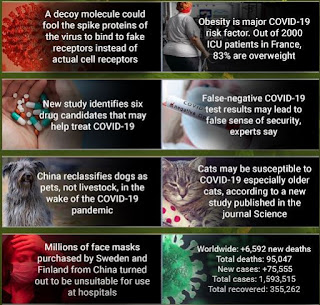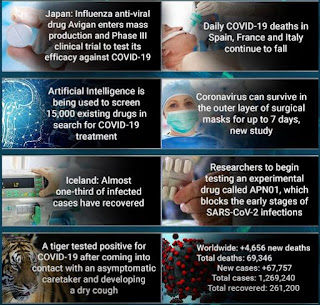Drug repurposing plays an important role in
treating COVID-19. Some of the positive
results have been shown in patients. Any guess which drug it is, yes Auranofin
is a chemical compound that contains gold particles and scientists are
experimenting with gold particles to treat diseases such as HIV, cancer,
neurogenerative disorders, and bacterial infections. Auranofin is effective in
COVID-19. This drug was approved by the FDA to treat rheumatoid arthritis. Many
researchers say that the repurposing of a drug is the best way to treat
COVID-19. SARS-CoV-2 needs host cell
proteins to replicate them. Some effective drugs interfere with this
replication process. Based on the Cell-line studies, the viral amount within the cells dropped by
95% after 48 hrs of treatment. There is a reduction of inflammation induced by
the coronavirus. Auranofin reduces the expression of cytokines, that draws
attention by immune cells at the injection site. This team plans to study the
effects of drugs on animal models. During the cytokine storm, the immune response gets out of control. As it kills healthy cells and may lead to organ
failure. This drug could inhibit the replication of the novel coronavirus and
mitigate the infection by reducing the lung associated damage. Lung damage
caused by COVID-19 often leads to severe respiratory distress.
Exercise will protect from COVID-19 complications,
Yes based on the research conducted by the University of Virginia, they found out
that the risk of acute respiratory distress syndrome can be reduced. Extracellular superoxide dismutase (EcSOD) is
an antioxidant that helps in preventing diseases, mostly EcSOD is secreted in
the muscles naturally that binds to vital organs. Their production is increased
by cardiovascular exercises. Regular exercise has been medicine for a decade.
Will India become a bio-medical hub after the
COVID-19 crisis? the answer is yes many start-up firms have started from ideas
to proof of concept. The stock market of pharmaceutical industries has been
increased for the past few days. But if the government supports more in their
annual budget we will have a good health care system and we can rise in the
global economy. Make in India concept will surely help any organization in the
future. We can proudly say Indian pharmaceutical companies are dominant in
generic drug manufacturing. Around 90% of drugs in the U.S are generic and more
than one third are manufactured in India. This will have more impact on the
future.






































